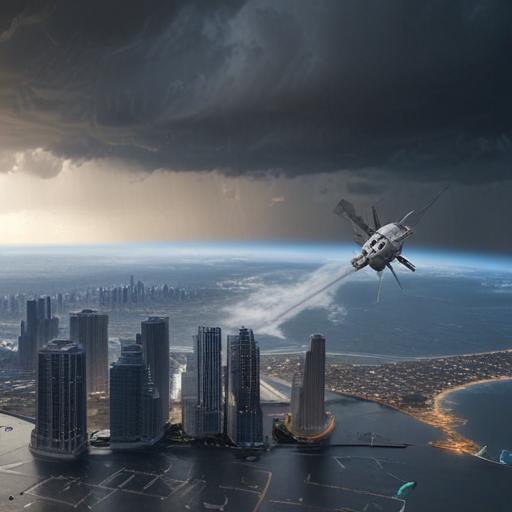Forecasters are facing a significant challenge as the Pentagon plans to halt access to crucial government satellite data used for tracking hurricanes, with the cutoff date now set for July 31—delayed from an earlier deadline following widespread concern from the meteorological community. This data, primarily obtained from Defense Department satellites, is vital for monitoring tropical cyclones during the night, helping prevent unexpected intensifications—a phenomenon termed “sunrise surprise.”
The microwave data from these satellites has proven invaluable, especially as recent trends indicate an uptick in rapid intensification of hurricanes, where storms quickly escalate to major classifications just hours before making landfall. Experts like Robert Rohde from Berkeley Earth emphasize the necessity of this dataset in providing detailed storm characteristics during nighttime hours, positing that losing this resource could leave meteorologists unprepared for rapid changes in storm behavior.
This latest decision is part of ongoing concerns regarding the federal government’s commitment to robust weather forecasting. Many meteorologists express alarm that the United States’ capabilities have significantly declined over recent months. The National Oceanic and Atmospheric Administration (NOAA) and the National Weather Service have experienced substantial workforce reductions, complicating their ability to provide timely updates. The situation has become more precarious following the recent elimination of the Climate.gov website, which presented research on human-caused climate change.
NOAA has asserted that while the microwave data is useful, their overall forecasting capabilities remain intact through other data sources, including infrared and visible satellite data, ground-based observations, and instruments like the Advanced Technology Microwave Sounder aboard NOAA’s polar satellites. However, the loss of microwave observations collected from the trio of Defense satellites means that meteorologists could face a significant decrease in the frequency of data scans, impacting their ability to track storms effectively.
Concerned experts argue that reduced access to microwave data is likely to lead to slow updates on storm developments. Meteorologists will have less frequent insights into storms, potentially causing hurried adjustments to forecasts when visibility improves at dawn. This is particularly troubling for vulnerable regions in the Caribbean and Central America, where meteorological reconnaissance is already limited.
Despite the prevailing challenges, the extra month before the cutoff could provide some researchers with a crucial window to prepare for the transition to new observational tools, although the uncertainty surrounding their effectiveness remains a point of concern. As forecasters navigate this landscape, they remain dedicated to advancing hurricane prediction techniques to ensure public safety amidst a changing climate.
The future of hurricane forecasting hinges on the ability to adapt and innovate in response to shifts in data availability, emphasizing the need for sustained support and resource allocation within meteorological agencies.
